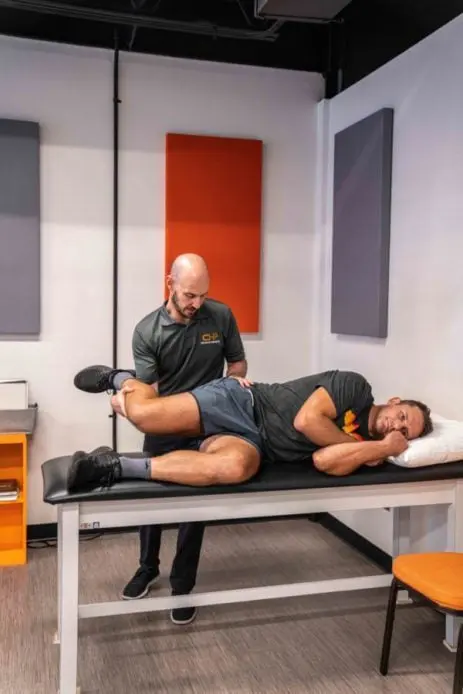Do your hips or lower back feel tight when you squat? Do your shoulders feel stiff when you try to raise your arms overhead, or do your ankles feel restricted during certain movements? These are common complaints seen regularly in the field of sports physical therapy.
Mobility issues like these are often frustrating, but they aren’t random. In fact, it’s your body—and more specifically, your nervous system—deliberately limiting your range of motion. That stiff muscle you feel is your body’s way of protecting itself or adapting to the physical demands placed on it.
As a physical therapist, I frequently reflect on my experiences working with elite athletes, particularly during my time with the National Basketball Association (NBA). Many of these athletes experienced ankle mobility restrictions, which were a natural adaptation to their sport. Their constant sprinting, jumping, and cutting movements—often performed with their heels rarely touching the ground—caused their bodies to adapt in a way that improved performance but at the cost of mobility.
In these athletes, the tissues around their ankles functioned like tight springs, making them more explosive without requiring excessive energy expenditure. While these adaptations allowed them to excel on the court, they also came with trade-offs, limiting ankle mobility. Over time, these performance-enhancing adaptations can lead to increased risk of injury if mobility is sacrificed too much.
When Does an Adaptation Become a Problem?
Adaptations like limited ankle mobility can be beneficial for specific movements or sports. However, when these adaptations go too far, they can put you at a higher risk for injury.
The key question is: How do we know when adaptations have gone too far?
The answer is simple: when the body can no longer perform the basic movements required by your daily life or sport. At this point, your joints have less mobility than necessary, and that’s when you begin to experience discomfort, stiffness, or injury.
For instance, a basketball player who spends most of their time on the balls of their feet may lose the ability to properly flex their ankles. This lack of mobility may not seem like an issue during the game, but it can lead to compensations elsewhere in the body, causing lower back pain, knee problems, or even an Achilles injury. Similarly, if your shoulders are stiff when lifting weights, it might not be the weights that are causing pain, but rather the shoulder’s inability to move through its full range of motion due to overuse or compensatory patterns.
How Can Physical Therapy Help?
One of the core principles of physical therapy is identifying and addressing these movement limitations before they turn into bigger problems. By targeting areas of the body that have adapted too far, physical therapy helps restore balance between mobility and stability.
At its core, mobility isn’t just about increasing flexibility or stretching. It’s about teaching your body how to move in a variety of ways. This is especially important for athletes and active individuals who have developed specific movement strategies over time. For example, if you primarily engage in forward-motion activities (like running or cycling), your body may over-adapt to these movements and lose the ability to move comfortably in other directions.
The Importance of Varying Your Movements
To counteract these adaptations, I encourage athletes and patients alike to incorporate daily exercises that challenge their bodies to move outside of their typical patterns. By regularly practicing movements that are different from their usual routines, individuals can maintain better overall mobility and reduce the risk of overuse injuries.
For example, I recently worked with a patient who had limited shoulder mobility. This patient experienced stiffness when raising their arms overhead due to years of repetitive shoulder movements. I introduced a daily shoulder mobility drill to improve their range of motion and reduce the risk of injury.
In another case, I advised a runner to incorporate lateral movement drills into her routine to counterbalance the constant forward motion of running. This allowed her to develop strength and mobility in muscles that weren’t being used as much, ultimately improving her performance and reducing her risk of injury.
Try These Mobility Drills for Better Movement
Here are a couple of examples of the mobility drills I often prescribe:
These exercises are simple but effective ways to restore mobility and ensure that your body doesn’t over-adapt to a single movement pattern.
Ready to Improve Your Mobility?
If you’re tired of feeling tight, stiff, or restricted during your favorite activities, physical therapy can help you restore balance and improve your movement. Whether it’s your hips, back, shoulders, or ankles causing trouble, understanding and addressing the root cause of your mobility limitations is the first step to feeling better and moving more freely.
Would you like to discover daily exercises and routines that can help you improve your mobility and overall performance? Contact us today to schedule an evaluation and get started on the path to better movement!
